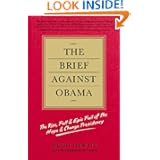In my opinion, there are two general areas that we need to discuss and then two areas under each general topic.
First, we need to talk about the kind of people that are carrying out this violence.
- We need fewer evil people in society. We, as Americans need to be better people. We also need fewer mentally/emotionally disturbed people who are willing to be violent.
- First, how do we reduce the number of evil people?
- By evil I mean people who are normal mentally/emotionally but who choose to carry out acts of violence against others who are not threatening them. We live in a society that romanticizes violence in games, movies, and literature. We also live in a culture that promotes coarseness towards other people and that promotes nastiness toward other people. The last fifty years have seen the deliberate dismantling of the structures in society that promote goodness and kindness in people. Religion is being pushed out of the public square into people's private lives. (Yes, people individually can be good and moral (in a social sense) and not be religious, but as a culture and society the lack of religion seems to bring about moral decay.) Certainly it doesn't help when religious values and individuals are excluded from public interaction through censorship or mocking. Nor does it help when the media and other forms of entertainment (and the government itself at times) deliberately pursue attitudes and actions that are eventually destructive of lives and societies. These attitudes and actions include violence, unkindness, drug use, sexual promiscuity to just name a few.
- We need instead to discourage violence and nastiness in language and actions wherever they occur. This includes games, movies, TV shows, internet interactions (have you read the comments on youtube?) and encourage polite, kind interactions and disagreements. Let's show each other that we can disagree - severely, loudly, angrily, but still not threaten other's lives, property or value as humans. Let's also address gang and similar violence. Maybe we should send in the National Guard and simply wipe out the gangs as if they were foreign intruders on our soil. (In some cases they are.)
- We need to encourage religion and its social value. We need to encourage civic organizations - Boy and Girl Scouts, Big Brothers, Elks, Rotary etc. Some won't like their stance towards homosexuals or whatever. So? The good that they do in training people to be socially good and virtuous outweighs any discrimination.
- Second, how do we reduce the number of fewer mentally/emotionally disturbed people who are willing to be violent?
- I don't know. This is one area where we need to be willing to spend more money. I've had students who were inexplicably angry. Some were angry enough to become violent. Such young people need help and their families are not always able to recognize it or obtain help for them. So we as a society need to be willing to pay for this. We need to be less stigmatizing about people who are receiving help for mental/emotional issues. If we don't take care of this issue, there will probably be more deaths in the future. On the other hand we can't simply refer every troubled person or have them branded as a potential killer.
- How to reduce deaths in any episode I think that we need to recognize that there will always be violence in this world, and that some of it will be awful. Even Europe has mass shootings.
- Nevertheless, at this point those in favor of gun rights must realize that guns kill more than baseball bats and knives and that guns that shoot more bullets and guns with bigger magazines will probably kill more people in the same amount of time than guns that shoot more slowly or must be reloaded more often. So these two areas need to be addressed. Do ordinary citizens really need large magazine semi-automatic weapons?
- Our society needs to really look at the statistics related to gun ownership. If there are more guns in society are we ordinary citizens safer or less safe? I've read articles on both sides that cite statistics that claim the opposite from each other. To me at the present time it seems that either there should be no guns at all for anyone, or ordinary people should be allowed to possess and bear arms at (nearly) all times. Since the former isn't going to happen, it makes more sense that ordinary people be encouraged to own and use firearms safely and responsibly.
- How to reduce the number of episodes of mass shootings
- Bad guys intent on killing must be kept away from innocents. But gun-free zones are usually a misnomer. If there are to be gun free zones, then they must constructed so that absolutely no one can get inside with a gun. A sign won't work. The bad guys won't pay attention, and then he has an open field on the unarmed innocents inside. True gun free zones must be sealed and guarded. Schools either need one guarded entrance with a metal detector, or they need some sort of armed presence in the school or both. This was actually proposed by Clinton over a decade ago. We do it in airports, don't we?
- Or the innocents need to be able to shoot back and defend themselves. By now it should be obvious that even the most dedicated and alert police force can't usually stop these incidents, but can only mitigate them and help clean up afterwards. Trained, responsible people need to be able to defend themselves and others. These people in schools need to be willing to die, either at the hands of the bad guys or through law enforcement who don't know that the person is a school employee.
- In most times of British history until more recent times and during Viking times slaves were not allowed to carry weapons, let alone use them. Only freemen were allowed to. A disarmed population is the sign of either an immature population or a population of effective slaves, living at their masters' mercy and whim. And an immature population that refuses to grow up will soon be an enslaved one for the safety of everyone.




